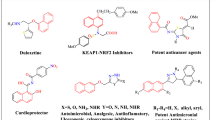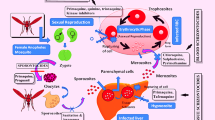Abstract
Several curcumin analogues bearing pyrazole were synthesized and characterized by IR, NMR, and mass spectral data. There were four tested compounds among 11 synthesized compounds, which were evaluated for antiproliferative activity and showed significant activity in both one-dose and five-dose assays. The antiproliferative effects were tested on a panel of 60 cell lines, according to the National Cancer Institute screening protocol. The most active compounds among the series were 3,5-bis(4-hydroxy-3-methylstyryl)-1H-pyrazole-1-carboxamide (3k) which showed mean percent growth inhibition of 116.09 in one-dose assay at 10 µM, and GI50 values were ranging between 0.0912 and 2.36 µM in five-dose assay. The best results were recorded on the leukaemia cell lines with value ranging from 0.0912 to 0.365 µM. All the tested compounds showed broad-spectrum antiproliferative activity over different cancer cell lines. When compared with the standard drug paclitaxel, the compound 3k showed superior activity on nearly 42 cell lines. The molecular docking study was performed to explore the binding interaction of these curcumin analogues with the active site of EGFR tyrosine kinase (EGFR-TK). The hydroxyl group of both phenyl rings was important for the rein-geminated hydrogen bonding by either side chain or backbone with the active site of EGFR-TK.
Graphical Abstract
Four curcumin analogues were evaluated for their antiproliferative activity and showed promising results. The molecular docking studies showed that all the compounds (3a–k) were well accommodated in the EGFR tyrosine kinase.












Similar content being viewed by others
References
Ahsan MJ, Khalilullah H, Yasmin S, Jadav SS, Govindasamy J (2013) Synthesis, characterisation, and in vitro anticancer activity of curcumin analogues bearing pyrazole/pyrimidine ring targeting EGFR tyrosine kinase. Bio Med Res Int 2013:239354. doi:10.1155/2013/239354
Alley MC, Scudiero DA, Monks PA, Hursey ML, Czerwinski MJ, Fine DL, Abbott BJ, Mayo JG, Shoemaker RH, Boyd MR (1988) Feasibility of drug screening with panels of human tumor cell lines using a microculture tetrazolium assay. Cancer Res 48:589–601
Aydemir N, Bilaloglu R (2003) Genotoxicity of two anticancer drugs, gemcitabine and topotecan, in mouse bone marrow in vivo. Mutat Res 537:43–51
Balaji SN, Ahsan MJ, Jadav SS, Trivedi V (2015) Molecular modeling, synthesis and antimalarial potentials of curcumin analogues containing heterocyclic ring. Arab J Chem. doi:10.1016/j.arabjc.2015.04.011
Blair JA, Rauh D, Kung C, Yun CH, Fan Q, Rode H, Zhang C, Eck MJ, Weiss WA, Shokat KM (2007) Structure-guided development of affinity probes for tyrosine kinases using chemical genetics. Nat Chem Bio 4:229–238
Boyd MR, Paull KD (1995) Some practical considerations and applications of the National Cancer Institute in vitro anticancer drug discovery screen. Drug Dev Res 34:91–109
Carmona D, Saez J, Granados H, Perez E, Blair S, Angulo A, Figadere B (2003) Antiprotozoal 6-substituted-5,6-dihydro-alpha-pyrones from Raimondia cf. monoica. Nat Prod Res 17:275–280
Cragg GM, Newman DJ (2005) Biodiversity: a continuing source of novel drug leads. Pure Appl Chem 77:7–24
Development therapeutic program NCI/NIH (2014). http://dtp.nci.nih.gov. Accessed 13 Nov 2014
Grever MR, Schepartz SA, Chabner BA (1992) The National Cancer Institute: cancer drug discovery and development program. Semin Oncol 19:622–638
Jia Y, Li J, Qin ZH, Liang ZQ (2009) Autophagic and apoptotic mechanisms of curcumin-induced death in K562 cells. J Asian Nat Prod Res 11:918–928
Koepfli JB, Mead JF, Brockman JA (1947) An alkaloid with high antimalarial activity from Dichroa Febrifuga1. J Am Chem Soc 69:1837
Kunwar A, Barik A, Mishra B, Rathinasamy K, Pandey R, Priyadarsini K (2008) Phytochemicals as modulators of neoplastic phenotypes. Biochem Biophy Act 1780:673–679
Lal J, Gupta SK, Thavaselvam D, Agrawal DD (2012) Design, synthesis, synergistic antimicrobial activity and cytotoxicity of 4-aryl substituted 3,4-dihydropyrimidinones of curcumin. Bioorg Med Chem 22:2872–2876
Liang G, Shao L, Wang Y, Zhao C, Chu Y, Xiao J, Zhao Y, Li X, Yang S (2009) Exploration and synthesis of curcumin analogues with improved structural stability both in vitro and in vivo as cytotoxic agents. Bioorg Med Chem 17:2623–2631
Mendelsohn J, Baselga J (2000) The EGF receptor family as targets for cancer therapy. Oncogene 19:6550–6565
Mishra S, Karmodiya K, Surolia N, Surolia A (2008) Synthesis and exploration of novel curcumin analogues as anti-malarial agents. Bioorg Med Chem 16:2894–2902
Monks A, Scudiero D, Skehan P, Shoemaker R, Paull K, Vistica D, Hose C, Langley J, Cronise P, Vaigro-Wolff A, Gray-Goodrich M, Campbell H, Mayo J, Boyd M (1991) Feasibility of a high-flux anticancer drug screening using a diverse panel of cultured human tumor cell lines. J Natl Cancer Inst 83:757–766
NCI Data Warehouse Index (2014). http://dtp.nci.nih.gov/dtpstandard/dwindex/index.jsp. Accessed 13 Nov 2014
Normanda N, Maiello MR, Luca AD (2002) Epidermal growth factor receptor tyrosine kinase inhibitors (EGFR-TKIs): Simple drugs with a complex mechanism of action? J Cell Physiol 194:13–19
Pari L, Tewas D, Eckel J (2008) Role of curcumin in health and disease. Arch Physiol Biochem 114:127–149
Sahu PK, Sahu PK, Gupta SK, Thavaselvam D, Agarwal DD (2012) Synthesis and evaluation of antimicrobial activity of 4H-pyrimido[2,1-b]benzothiazole, pyrazole and benzylidene derivatives of curcumin. Eur J Med Chem 54:366–378
Saja K, Babu MS, Karunagaran D, Sudhakaran PR (2007) Anti-inflammatory effect of curcumin involves down regulation of MMP-9 in blood mononuclear cells. Int Immunopharm 7:1659–1667
Sharma R, Jadav SS, Yasmin S, Bhatia S, Khalilullah H, Ahsan MJ (2015) Simple efficient and improved synthesis of Biginelli-type compounds of curcumin as anticancer agents. Med Chem Res 24:236–244
Shoemaker RH (2006) The NCI60 human tumour cell line anticancer drug screen. Nat Rev Cancer 6:813–823
Singh RK, Rai D, Yadav D, Bhargava A, Balzarini J, DeClercq E (2010) Synthesis, antibacterial and antiviral properties of curcumin bioconjugates bearing dipeptide, fatty acids and folic acid. Eur J Med Chem 45:1078–1086
Vyas A, Dandawate P, Padhye S, Ahmad A, Sarkar F (2013) Perspectives on new synthetic curcumin analogs and their potential anticancer properties. Curr Pharm Des 19:2047–2069
WHO World Cancer Report 2014. Retrieved from http://www.nydailynews.com/life-style/health/14-million-people-cancer-2012-article-1.1545738. Retrieved on 12 Dec 2013
Yadav IS, Nandekar PP, Shrivastava S, Sangamwar A, Chaudhury A, Agarwal SM (2014) Ensemble docking and molecular dynamics identify knoevenagel curcumin derivatives with potent anti-EGFR activity. Gene 539:82–90
Yar MS, Siddiqui AA, Ali A (2007) Synthesis and anti tuberculostatic activity of novel 1,3,4-oxadiazole derivatives. J Chin Chem Soc 54:5–8
Zhichang L, Yinghong W, Yuanqin Z, Qinxiang X (2012) Synthesis and antibacterial activities of N-substituted pyrazole curcumin derivatives. Chin J Org Chem 32:1487–1492
Acknowledgments
Antiproliferative data were provided by National Cancer Institute (NCI US), Bethesda, MD, USA. We are grateful for all help provided by Prof. Doug Smallwood and Mr. Mohammed Nayel. The people holding the management of Maharishi Arvind College of Pharmacy, Jaipur, Rajasthan, India, are acknowledged for providing research facilities. We are also grateful to Dr. Reddy Institute of Life Science, Hyderabad, Andhra Pradesh, India, for providing spectral data of synthesized compounds.
Author information
Authors and Affiliations
Corresponding authors
Ethics declarations
Conflict of interest
The authors confirm that this article content has no conflicts of interest.
Rights and permissions
About this article
Cite this article
Ahsan, M.J., Choudhary, K., Jadav, S.S. et al. Synthesis, antiproliferative activity, and molecular docking studies of curcumin analogues bearing pyrazole ring. Med Chem Res 24, 4166–4180 (2015). https://doi.org/10.1007/s00044-015-1457-y
Received:
Accepted:
Published:
Issue Date:
DOI: https://doi.org/10.1007/s00044-015-1457-y




